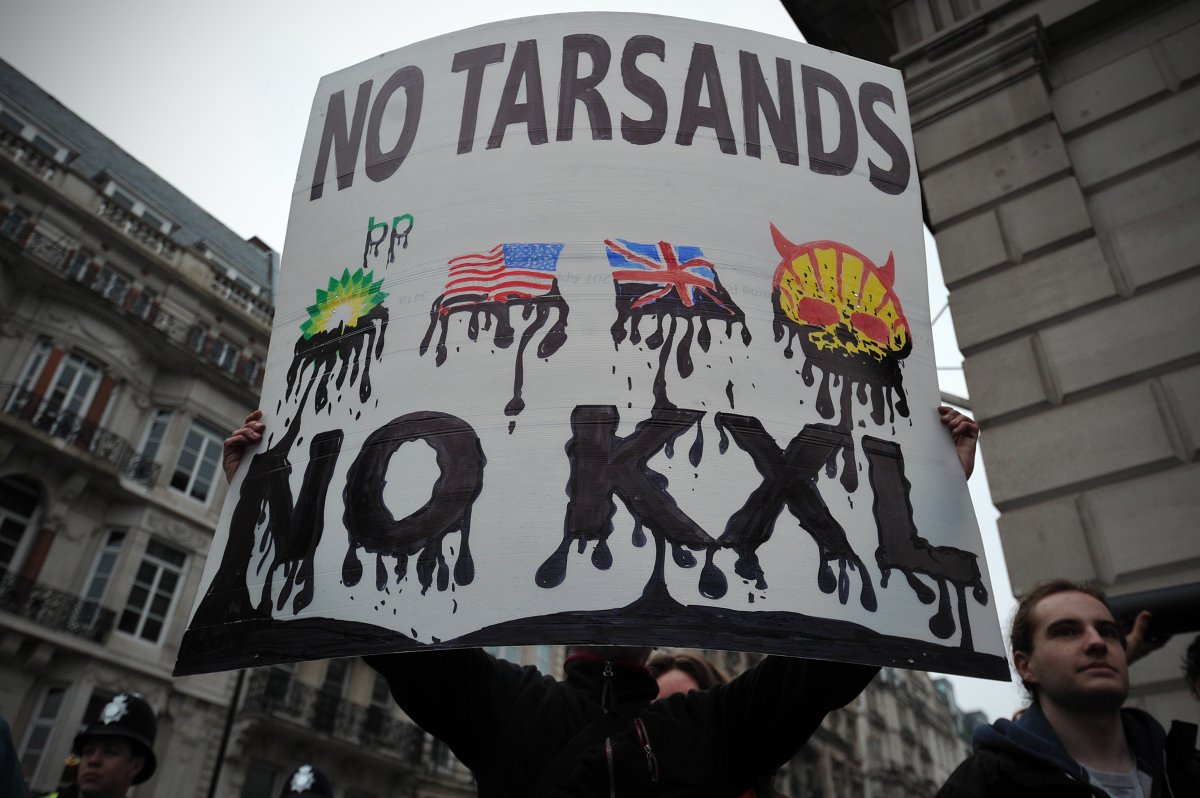Canada is pleading its case, yet again, that Alberta’s oil sands are a clean and reliable energy resource. But the resource that Natural Resources Minister Joe Oliver is trying to defend is at risk of getting a very big black mark on its reputation.

The European Commission continues to debate whether the oil sands are as dirty as opponents say.
The EU’s Fuel Quality Directive — a legislative measure approved in 2009 but not yet implemented — is an initiative that requires fuel suppliers “to reduce the greenhouse gas intensity of energy supplied for road transport.” It proposed ranking Canada’s oilsands as “highly polluting” because the oil sands “are more CO2-polluting than other kinds of fuel.”
The FQD’s goal is to cut those emissions by six per cent by 2020. While giving Alberta oil this designation wouldn’t outright ban it (unlike the EU ban on Canadian seal products), it would make it a less appealing fuel option in European markets by tacking on an increased tax.
Read also: Feds launch project to convert oilsands emissions to biofuels
Oliver said he would take action if that were to happen, saying it unfairly discriminates against Canada.
Opinions differ (greatly) on the cleanliness of Alberta oil, and the clean vs. dirty debate is regularly waged in the media.
Postmedia News reported in April that Canada’s greenhouse gas emissions had the highest growth among G8 countries in the past 20 years.
Comments by former U.S. Vice-President Al Gore about the oil sands this week at an event in Toronto fanned the flames for environmentalists and irked industry proponents by saying: “There’s only dirty oil and dirtier oil.”
Calgary Herald columnist and editor of Policy Magazine L. Ian MacDonald slammed Gore’s comments that Canada was treating the atmosphere like “an open sewer,” saying the Nobel laureate needed to do some fact checking.
Electricity produced by coal and other resources in the U.S. and Europe produce “nearly 30 times” the greenhouse gas emission of the oil sands: “This is, for Gore, an inconvenient truth,” MacDonald wrote.
While Gore stands with environmentalists on the “dirty” oil label, New York Times columnist Joe Nocera wrote last month “there is almost no difference, in terms of greenhouse gas emissions, between sands oil and old-fashioned oil drilling,” thanks to technological advancements.
But, that doesn’t appear to be enough for the U.S. Environmental Protection Agency (EPA). There has been a heated debate over whether to allow a pipeline from Alberta, through the U.S. Midwest, to the Gulf Coast.
Just last month, the EPA objected to an environmental review of the proposed pipeline – which could allow as much as 830,000 barrels of diluted bitumen to flow to Texas. The objection was attributed, in part, to greenhouse gas emissions, with the agency saying the oil sands “could be 81 per cent greater than emissions from the average crude refined in the U.S. in 2005 on a well-to-tank basis, and 17 per cent greater on a well-to-wheels basis.”
The EPA also noted the State Department review of the $5.3-billion project “acknowledged that large portions of the crude will sink if there is a spill into a waterway.” The proposed pipeline would run over top of the one of the world’s largest fresh groundwater sources – the Ogallala Aquifer, covering 450,000 square kilometers.




Comments